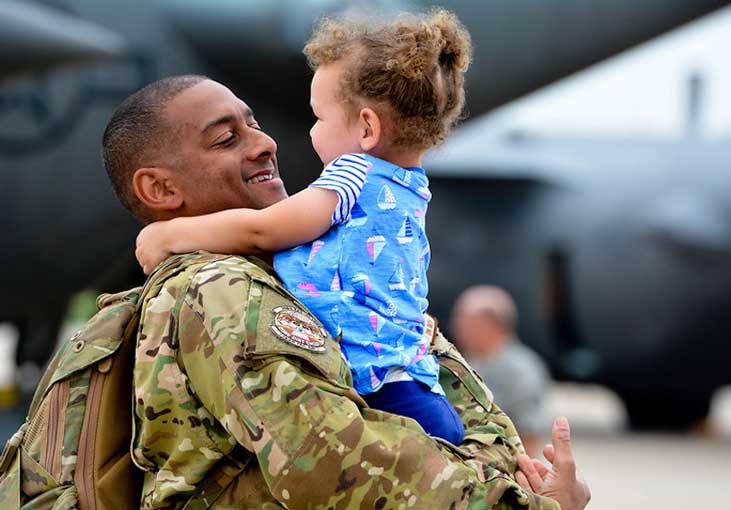You dream of the first embrace or the first family meal following deployment. Although reintegration—the phase following a military deployment—can be a joyous occasion, it can also be a challenging time for families. Family members can feel high levels of stress when their Service Member returns home from deployment.
Times of transition, such as reintegration, disrupt everyday routines. If you’ve flown in an airplane and experienced turbulence, you understand the jolt to the otherwise smooth path of travel. Reintegration can feel turbulent too, especially as you try to blend back into the family and make up for missed family events, such as birthdays and holidays. Returning to the home front can also disrupt the routines you and your family created separately during deployment.
Think about how you transitioned from life before deployment to life during deployment. How did your everyday routines change once you were deployed? Maybe instead of snacking from the pantry as you did before you deployed, you focused on eating more nutritious foods once you were deployed. Or maybe instead of playing soccer with your kids before deployment, you focused on physical fitness with your battle buddies during deployment. Or perhaps, during deployment, you found time to meditate for optimal performance.
You can also think about how your family transitioned from life pre-deployment to life during deployment. Maybe your partner felt overwhelmed they had to do all the household chores by themselves. Or maybe your kids felt a sense of pride in their independence when taking on new household roles.
Regardless of how you and your family’s routines changed, you all had to adapt and be flexible around those changes.
When you return from deployment, you might miss the routines you created with your battle buddies, and your family might feel irritable or stressed as if you’re intruding on their routines. These are completely normal feelings, but if left unresolved, they could have important implications for your military performance. Symptoms of depression, aggression, and distress can hurt morale and readiness.
Adapting to change
Whatever changes lie ahead during reintegration, you can overcome them. Try these 3 strategies to help you readjust to family life:
- Rethink what you consider to be interruptions. Instead of focusing on the ways you or your family are disrupting each other’s routines, focus on the ways you’re trying to help each other. For example, if you find yourself upset that your family cooked your favorite comfort meal instead of a nutrient-dense meal upon your return, reflect on your feelings and try to see their intentions. Your family likely wanted you to feel welcome and comforted, which isn’t an intentional action to disrupt your new nutrition routine. Plus, one indulgent meal won’t set you back on your progress.
Help your family understand your intentions too. For example, you might let your kids stay up later when you return from deployment, which disrupts your family’s previously established routine of an early bedtime. But communicate that a later bedtime is your way of trying to find your way back into your family’s life and soak up precious moments after being gone for so long. - Focus on open communication. Changes to routines can cause communication to be less open. But having open communication can help you and your partner figure out the best plan for reintegration, whether it’s adapting to the family’s routines developed during deployment, creating new routines together, or reestablishing the old routines from before deployment. Open communication helps your family be more adaptable and flexible during reintegration, which leads to reconnection and closeness in your relationships.
- Start new family traditions. For military families, traditions are often created during moments of change. So, view reintegration as an opportunity to start a new family tradition. Have the family brainstorm traditions you might want to start, such as cooking together once a week or planning an annual camping trip. For other ideas, read HPRC’s blog about military family traditions in action.
Learn more about reintegration with these resources:
